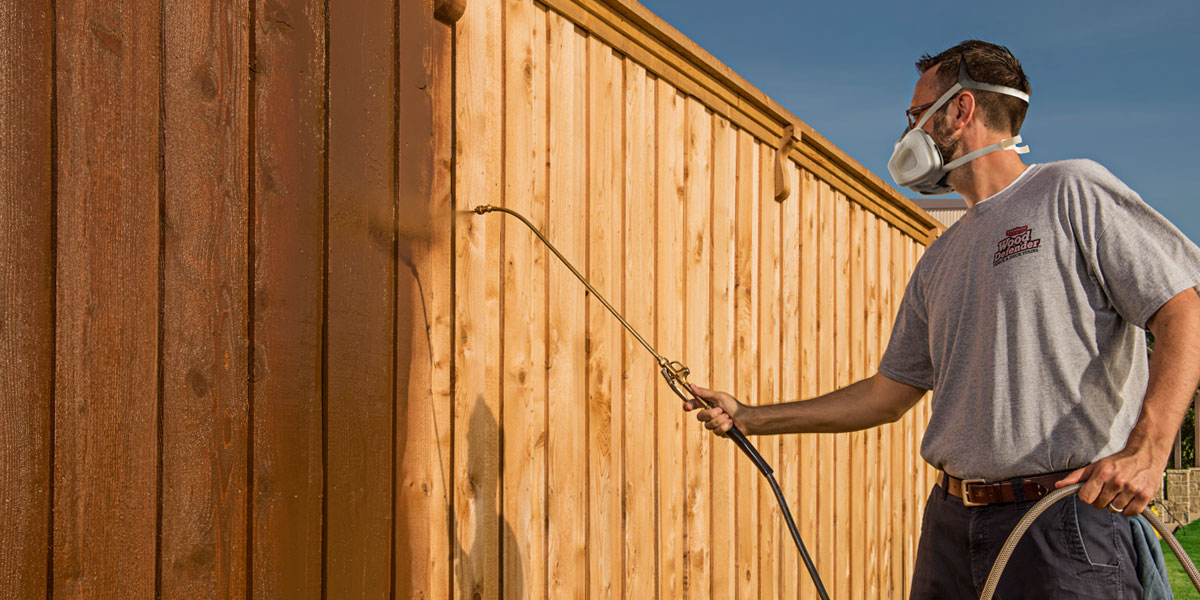Specialist Fence Staining: Change Your Fence with Enduring Outcomes!
The Ultimate Overview to Fencing Discoloration: Tips and Techniques You Required to Know
In the realm of home maintenance, fencing staining commonly becomes a job that calls for attention but is regularly neglected. The process includes even more than just slapping on a coat of discolor; it requires accuracy, expertise, and the right techniques to ensure a resilient and visually attractive outcome. Whether you are an experienced DIY enthusiast or a property owner seeking to improve the visual charm of your residential or commercial property, understanding the nuances of fencing discoloration can make a considerable difference. Let's explore the intricacies of this seemingly uncomplicated yet remarkably complicated task to unlock the secrets that can change your fencing from a simple boundary to a standout feature of your exterior area.
Benefits of Fencing Staining
What benefits does fence staining deal to property owners looking for to improve both the appearance and long life of their outdoor frameworks? Fencing discoloration offers countless advantages that make it a popular selection for property owners seeking to protect and enhance their fencings. One of the primary advantages of fencing discoloration is its capability to boost the curb charm of a residential property. By choosing the best stain color, house owners can enhance their exterior color pattern, adding a touch of style and style to their outside room - Fence Staining Nashville TN.
Furthermore, fence staining assists to shield the wood from the aspects, such as rain, snow, and UV rays. This defense not just prevents the wood from rotting and rotting however additionally expands its lifespan, saving house owners cash on costly repair services or substitutes in the lengthy run. Fence Staining Service. Additionally, staining creates a barrier against parasites, such as termites and woodworker ants, which can cause significant damage to unattended wood fences
Choosing the Right Stain

An additional aspect to consider is the level of security you want for your fence. Clear discolorations offer marginal protection versus UV rays and wetness, while semi-transparent and strong stains provide raised protection. If your fence is revealed to harsh climate condition, a solid discolor may be the very best choice to ensure maximum sturdiness.

Preparing Your Fencing
Prior to applying the picked click now stain, thorough preparation of the fencing surface area is vital to make certain optimal outcomes. Begin by cleaning up the fencing to get rid of dust, debris, and any type of old tarnish or repaint. Make required repair services to make certain the fencing is structurally sound.
After cleaning and fixing, it is crucial to sand the fence to produce a smooth surface for the discolor to comply with. Make use of a medium-grit sandpaper to eliminate any kind of harsh spots or imperfections. Wipe down the fence with a tack cloth to remove any staying dust bits.
Applying the Stain

When using the stain, function systematically section by area, beginning with the top and moving downwards to protect against drips and guarantee also coverage. Usage long, smooth strokes to apply the discolor towards the wood grain, enabling far better penetration and a more expert coating. Take treatment to maintain a wet side to stay clear of lap marks and overlap each stroke slightly to blend the discolor seamlessly. Once the very first layer is full, permit it to completely dry according to the producer's directions prior to deciding if a second coat is required for added security and long life.
Keeping Your Stained Fencing
To make sure the longevity and visual allure of your tarnished fencing, normal upkeep is essential. The initial step in preserving your stained fence is to frequently examine it for any type of signs of wear, such as fading, peeling, or cracking. Addressing these issues promptly can prevent further damages and extend the life of your discolor. It is advised to cleanse your tarnished fencing at the very least yearly making use of a mild cleaning agent and water to eliminate dirt, grime, and mildew buildup. After cleansing, permit the fence to dry entirely prior to applying any kind of extra treatments or discolorations. Furthermore, it is important to keep an eye on the sealant on your stained fencing and reapply it as needed to shield the timber from moisture and UV damages. Lastly, maintain greenery trimmed and far from the fence to avoid mold and mildew and mildew development. By complying with these upkeep ideas, you can guarantee that your tarnished fence continues to be in top condition for several years to come.
Verdict
In conclusion, fence discoloration supplies various advantages such as defense against weathering and improving the visual allure of your property. By selecting the appropriate tarnish, correctly preparing your fence, applying the stain properly, and keeping it routinely, you can ensure your fencing stays in leading problem for several years to come. Following these suggestions and methods will certainly aid you achieve a wonderfully discolored fence that will stand the test of time.